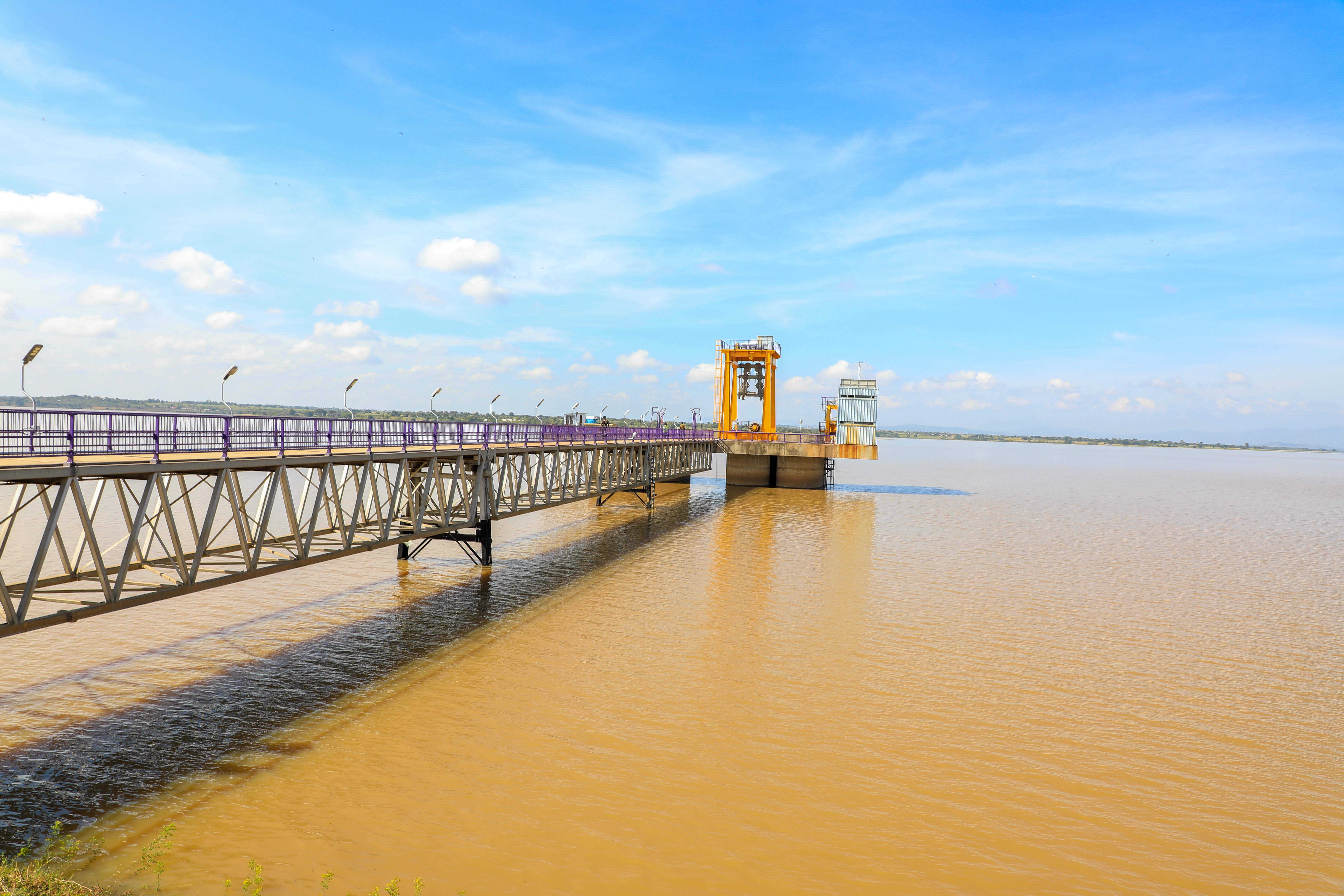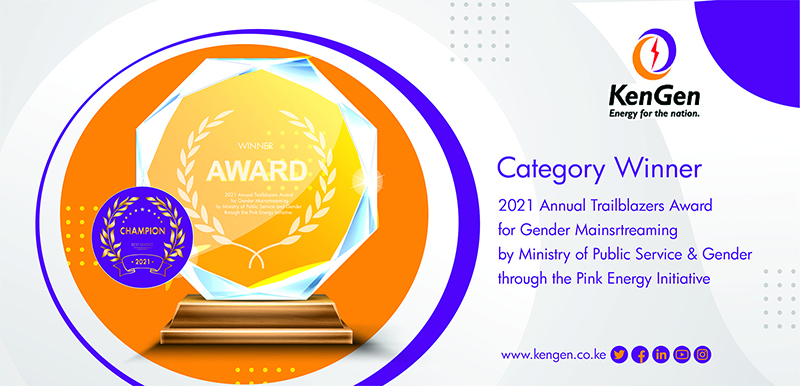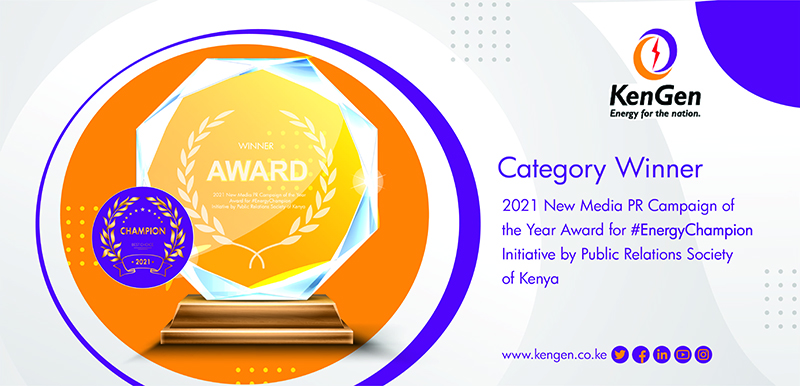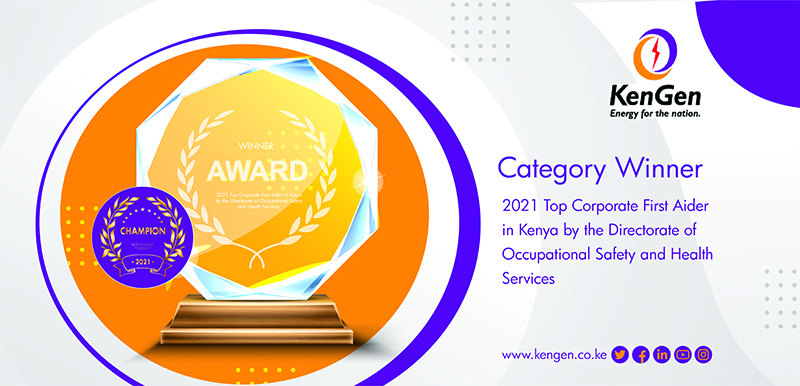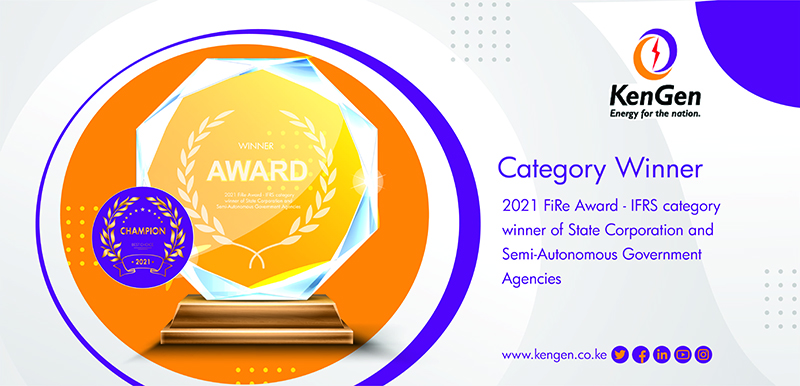NAIROBI, Thursday, October 17, 2024: Kenya Electricity Generating Company PLC (KenGen) has today unveiled its bold G2G Strategy 2024–2034, a visionary roadmap aimed at spearheading Kenya’s transition to a sustainable and green energy future.
This strategic plan cements KenGen’s position as a trailblazer in renewable energy, with a clear focus on expanding geothermal, wind, and solar investments, advancing operational efficiency, and integrating cutting-edge technology for the good of all Kenyan consumers.
Speaking during the launch event held at the Olkaria Geothermal Spa in Naivasha, Hon. James Opiyo Wandayi, Cabinet Secretary for Energy, commended KenGen’s forward-thinking approach, stating that KenGen’s ambitious goals under the new strategy will include scaling up renewable energy capacity, diversifying its energy portfolio, and contributing to Kenya’s economic transformation through job creation and infrastructure development.
“KenGen’s G2G Strategy sets a clear and actionable path for the future of Kenya’s energy sector. As we pursue the goal of 100% renewable energy, the government will continue to support KenGen’s efforts to deliver clean, reliable, and affordable power to all Kenyans. This strategy is critical in our journey towards a low-carbon economy and will ensure Kenya’s continued leadership in green energy innovation,” said Hon. Wandayi who was the Chief Guest during the launch.
The CS went on to say that the G2G Strategy was built on key pillars that focus on expanding geothermal power capacity, scaling up wind and solar projects, and exploring new technologies like hydrogen energy and energy storage solutions. This diversification he said would not only strengthen Kenya’s energy resilience but also ensure KenGen remains a leader in the global renewable energy landscape.
For his part, KenGen Managing Director and CEO, Eng. Peter Njenga, stated: “This strategic plan represents a historic moment for KenGen and Kenya’s energy sector. Our vision seeks to harness Kenya’s immense renewable energy potential to provide reliable, affordable, and clean power to all Kenyans.”
The NSE listed energy generator CEO, went on to say: “We are committed to being at the forefront of the global energy transition, and the G2G Strategy will accelerate our efforts to achieve carbon neutrality while meeting the growing energy demand in the region.”
KenGen’s Board Chairman, Eng. Frank Konuche, reiterated the company’s focus on driving Kenya’s socio-economic impact through the new strategy.
Eng. Konuche further said: “To realize this bold vision, we are making substantial investments in our infrastructure, workforce, and community-driven initiatives. These investments are expected to create new jobs, significantly boost Kenya’s GDP, and position KenGen as a key driver of the country’s economic transformation.”
Ends…
Note to Editor:
About KenGen
Kenya Electricity Generating Company PLC - KenGen is the leading electricity generation company in the Eastern Africa region with an installed generation capacity market share of more than 60%. The company’s primary business is to provide safe, reliable, and competitively priced electric energy for the country in an environmentally friendly and sustainable manner while creating value for its stakeholders.
Today, KenGen PLC has an installed generation capacity of 1,725MW, of which over 93% is drawn from green sources namely: Hydro (826MW), Geothermal (754MW), Wind (25.5MW). The balance is from Thermal.
For media queries please contact: Frank D. Ochieng, Tel:0721816896 Email: This email address is being protected from spambots. You need JavaScript enabled to view it.or This email address is being protected from spambots. You need JavaScript enabled to view it.
NAIROBI, Thursday, October 10, 2024: Kenya Electricity Generating Company PLC (KenGen) has assured communities living downstream of the Seven Forks Dams that water flow in the Tana River will remain steady, even as the country faces reduced rains.
At the same time, consumers of electricity in Kenya will continue enjoying the benefits of cheaper Hydroelectric Power (HEP) following KenGen’s deliberate move to implement a robust water management program which will ensure steady generation of HEP even as rains subside.
The NSE-listed energy generator says the strategic management of its large dams in the Eastern Region plays a critical role in regulating water levels, ensuring a consistent flow of the Tana River adding that without these interventions, the river could face severe depletion resulting from reduced rainfalls, affecting communities, agriculture, and wildlife that depend on its waters.
“Kenyans should be happy to know that the hydro generation has remained strong, helping to stabilize the cost of power and the various roles of the Seven Forks Hydroelectric Complex, which, as we have said before, shields communities downstream from flooding during heavy rains by holding the bulk of the water,” said KenGen Managing Director and CEO, Eng. Peter Njenga, adding, “Additionally, as we enter the reduced rains season, those who depend on water from the River should not be worried since we will be able to ensure steady flow of water from our dams.”
Thanks to KenGen’s robust water management program in the Seven Forks Dams, River Tana will continue to receive a steady flow of water as outflows from the five large dams.
As of 6 p.m. on October 8, 2024, water levels across the Seven Forks dams remained high as follows: Masinga Dam which is the largest reservoir recorded 1,055.00 meters above sea level (Masl), Kamburu Dam at 1,001.87 Masl, Gitaru Dam at 922.32 Masl, Kindaruma Dam at 779.75 Masl, and Kiambere Dam at 696.97 Masl.
According to latest reports from KenGen, all the major dams are at full capcity despite notably lo inflows into the system, with only 1.89 cubic meters per second (Cumecs) entering Masinga Dam and 5.37 Cumecs recorded at the Thiba River.
Eng. Njenga reiterated that the company’s strategic management of these reservoirs has prevented severe water shortages in the Tana River and helped cushion Kenyans against erratic water supply during the dry period. Additionally, the CEO noted that KenGen’s diversified energy mix, which includes significant geothermal capacity, has been key in maintaining grid stability and powering the country during this time of reduced hydropower output.
“We are working around the clock to ensure that Kenyans continue to receive a reliable supply of power and that the water resources entrusted to us are managed sustainably,” said Eng. Njenga. “Our hydropower plants, particularly those in the Seven Forks, are doing much more than generating power; they are regulating the flow of the Tana River and ensuring water availability for millions of people. At the same time, our geothermal plants in Olkaria and Eburru are providing steady baseload power, offsetting the low hydropower generation and ensuring grid stability.”
KenGen’s geothermal plants, which are not dependent on rainfall, currently provide a consistent source of power to the national grid, helping to buffer against the effects of erratic weather patterns. Geothermal energy, which now contributes nearly 40% of power consumed by Kenyans, is part of Kenya’s broader strategy to address the impacts of climate change by reducing the country’s reliance on hydroelectric power, which is vulnerable to droughts.
By leveraging geothermal energy, KenGen is not only meeting demand but also supporting Kenya’s climate action goals through clean and renewable energy generation.
“Our long-term strategy is to build resilience against climate change impacts by increasing our geothermal capacity and investing in more sustainable energy solutions,” added Eng. Njenga. “This approach is in line with Kenya’s commitment to climate action under the Paris Agreement and the country’s Vision 2030 development agenda.”
KenGen says it remains committed to its mandate of sustainable energy production while safeguarding critical water resources for current and future generations. The company continues to innovate in water and energy management, including exploring ways to enhance its geothermal capacity and investing in additional renewable energy sources such as wind and solar. Through these efforts, KenGen is positioning itself as a key player in Kenya’s transition to a low-carbon economy and a leader in sustainable development.
“We urge all stakeholders, including policymakers, environmental agencies, and the public, to support water conservation efforts and the sustainable management of hydropower and geothermal resources. With the combined support of all, we believe that Kenya can build a more resilient and sustainable future in the face of climate change,” said Eng. Njenga.
Ends…/
Note to Editor:
About KenGen
Kenya Electricity Generating Company PLC - KenGen is the leading electricity generation company in the Eastern Africa region with an installed generation capacity market share of more than 60%. The company’s primary business is to provide safe, reliable, and competitively priced electric energy for the country in an environmentally friendly and sustainable manner while creating value for its stakeholders.
Today, KenGen PLC has an installed generation capacity of 1,725MW, of which over 93% is drawn from green sources namely: Hydro (826MW), Geothermal (754MW), Wind (25.5MW). The balance is from Thermal.
For media queries please contact: Frank D. Ochieng, Tel:0721816896 Email: This email address is being protected from spambots. You need JavaScript enabled to view it. or This email address is being protected from spambots. You need JavaScript enabled to view it.
Page 11 of 45



